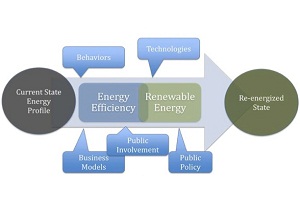NREL report finds state policies imperative to spread of renewables
 State policies can have an large impact on the growth of solar and wind power markets, according to the National Renewable Energy Laboratory’s (NREL) recent report, “State of the States 2010: The Role of Policy in Clean Energy Market Transformation”.
State policies can have an large impact on the growth of solar and wind power markets, according to the National Renewable Energy Laboratory’s (NREL) recent report, “State of the States 2010: The Role of Policy in Clean Energy Market Transformation”.
The report, issued annually since 2008, finds that policies like renewable portfolio standards (RPS) and interconnection policies affect the amount of solar and renewable generation in states.
Now that NREL has been issuing the report for a number of years, report co-author Elizabeth Doris said they are noticing trends. Among them is the lag between when policy is enacted and when renewables start proliferating within the states.
“It’s really interesting; some of things we’ve been able to see is the lag when policies go into place,” Doris said. “I think one of the most interesting findings that’s going to be helpful is this distance between when a policy goes into place and when it goes into effect.”
The report is intended to help states understand how policy will affect their energy portfolios.
“What we’re really trying to figure out now is how do you set the analysis so we can identify what the role of policy is,” Doris said. “[So we] can say it’s going to cost ‘x’ amount and get ‘y’ amount of renewables.”
The 2010 report, which relies on previous years’ data, also started to show the effects of the recession on the clean energy market.
“We also have a seen a little bit, and we’re going to have to wait and see for this year’s [i.e., 2010] data—the effect of the economic downturn and the inability of people to get economic financing,” Doris said. “Ideally, as things recover, we’ll be able to see it. It’s going to take some time to see that—if we see anything.”
The strongest connection policy for a renewable technology is wind, according to Doris.
“We think that’s because [wind policies] have been around the longest,” she said.
There were also correlations between RPS policies and renewables, particularly the distributed generation (DG) nature of solar power.
“That’s growing pretty quickly. For us it’s a matter of being able to statistically connect the policy development in those states to DG,” Doris said.
Such generation also is affected by states’ interconnection policies.
“If you can’t connect to the grid, the only option is rural development,” Doris said. “How can we help them understand what the effect of those policies will be? It’s more about being able to see those connections over time than it is about waiting to see the markets mature.”
Pictured: An expert from NREL’s report.



